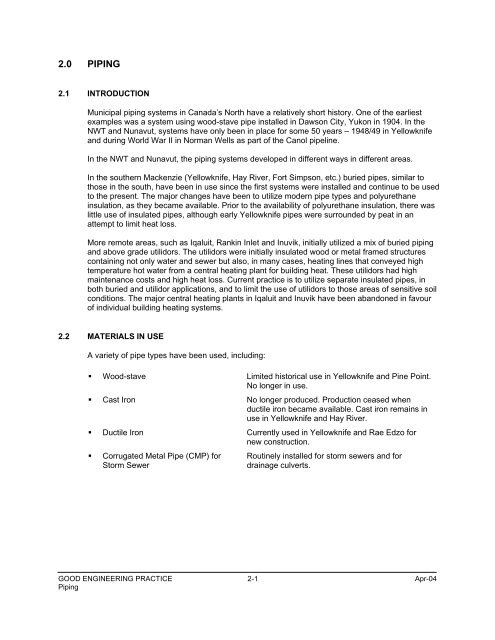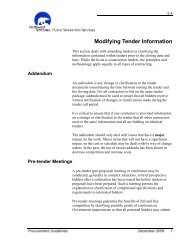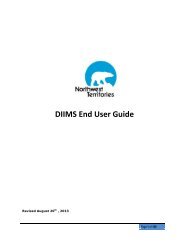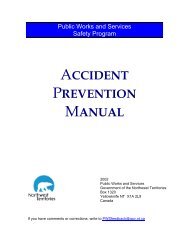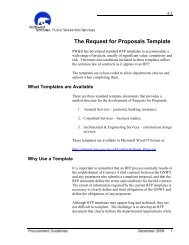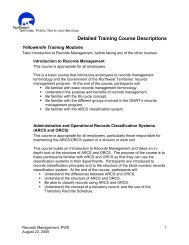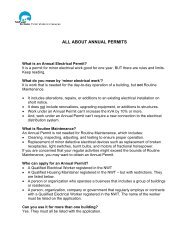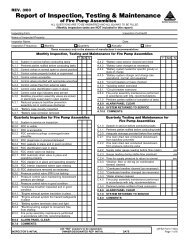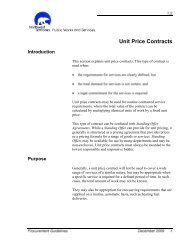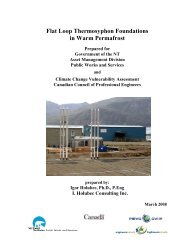Good Engineering Practice for Northern Water and Sewer Systems
Good Engineering Practice for Northern Water and Sewer Systems
Good Engineering Practice for Northern Water and Sewer Systems
You also want an ePaper? Increase the reach of your titles
YUMPU automatically turns print PDFs into web optimized ePapers that Google loves.
2.0 PIPING<br />
2.1 INTRODUCTION<br />
Municipal piping systems in Canada’s North have a relatively short history. One of the earliest<br />
examples was a system using wood-stave pipe installed in Dawson City, Yukon in 1904. In the<br />
NWT <strong>and</strong> Nunavut, systems have only been in place <strong>for</strong> some 50 years – 1948/49 in Yellowknife<br />
<strong>and</strong> during World War II in Norman Wells as part of the Canol pipeline.<br />
In the NWT <strong>and</strong> Nunavut, the piping systems developed in different ways in different areas.<br />
In the southern Mackenzie (Yellowknife, Hay River, Fort Simpson, etc.) buried pipes, similar to<br />
those in the south, have been in use since the first systems were installed <strong>and</strong> continue to be used<br />
to the present. The major changes have been to utilize modern pipe types <strong>and</strong> polyurethane<br />
insulation, as they became available. Prior to the availability of polyurethane insulation, there was<br />
little use of insulated pipes, although early Yellowknife pipes were surrounded by peat in an<br />
attempt to limit heat loss.<br />
More remote areas, such as Iqaluit, Rankin Inlet <strong>and</strong> Inuvik, initially utilized a mix of buried piping<br />
<strong>and</strong> above grade utilidors. The utilidors were initially insulated wood or metal framed structures<br />
containing not only water <strong>and</strong> sewer but also, in many cases, heating lines that conveyed high<br />
temperature hot water from a central heating plant <strong>for</strong> building heat. These utilidors had high<br />
maintenance costs <strong>and</strong> high heat loss. Current practice is to utilize separate insulated pipes, in<br />
both buried <strong>and</strong> utilidor applications, <strong>and</strong> to limit the use of utilidors to those areas of sensitive soil<br />
conditions. The major central heating plants in Iqaluit <strong>and</strong> Inuvik have been ab<strong>and</strong>oned in favour<br />
of individual building heating systems.<br />
2.2 MATERIALS IN USE<br />
A variety of pipe types have been used, including:<br />
• Wood-stave Limited historical use in Yellowknife <strong>and</strong> Pine Point.<br />
No longer in use.<br />
• Cast Iron No longer produced. Production ceased when<br />
ductile iron became available. Cast iron remains in<br />
use in Yellowknife <strong>and</strong> Hay River.<br />
• Ductile Iron Currently used in Yellowknife <strong>and</strong> Rae Edzo <strong>for</strong><br />
new construction.<br />
• Corrugated Metal Pipe (CMP) <strong>for</strong><br />
Storm <strong>Sewer</strong><br />
Routinely installed <strong>for</strong> storm sewers <strong>and</strong> <strong>for</strong><br />
drainage culverts.<br />
GOOD ENGINEERING PRACTICE 2-1 Apr-04<br />
Piping


